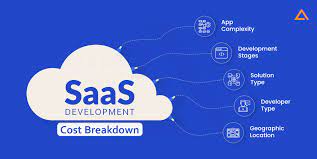The Evolution of SaaS Software Development
Software as a Service (SaaS) has revolutionised the way businesses approach software development. SaaS applications are cloud-based solutions that are hosted and maintained by the service provider, making them accessible to users over the internet. This model has gained immense popularity due to its flexibility, scalability, and cost-effectiveness.
SaaS software development involves creating applications that can be accessed from any device with an internet connection, eliminating the need for complex installations and updates. This approach allows businesses to focus on their core activities while leaving the technical aspects to the service provider.
One of the key advantages of SaaS software development is its rapid deployment capabilities. Developers can quickly build and release updates, ensuring that users always have access to the latest features and improvements. This agility enables businesses to stay ahead of the competition and adapt to changing market conditions.
Furthermore, SaaS software development promotes collaboration and innovation. Developers can easily integrate new technologies and functionalities into their applications, providing users with enhanced experiences and capabilities. This continuous evolution ensures that SaaS applications remain relevant and valuable in today’s fast-paced digital landscape.
Security is another crucial aspect of SaaS software development. Service providers invest heavily in robust security measures to protect user data and ensure compliance with industry regulations. By entrusting their data to reputable SaaS providers, businesses can mitigate security risks and focus on growing their operations.
In conclusion, SaaS software development represents a significant shift in how businesses leverage technology to drive growth and efficiency. With its emphasis on accessibility, agility, collaboration, innovation, and security, SaaS is poised to shape the future of software development for years to come.
Frequently Asked Questions About SaaS Software Development
- What coding language is SaaS?
- What is SaaS software development?
- What software is used to build SaaS?
- What is an example of SaaS development?
What coding language is SaaS?
In the realm of SaaS software development, the choice of coding language is not limited to a single option. SaaS applications can be built using a variety of programming languages, each offering its own set of advantages and capabilities. Commonly used languages for SaaS development include JavaScript, Python, Ruby, Java, and C#. The selection of a coding language typically depends on factors such as the specific requirements of the project, the expertise of the development team, and the scalability needs of the application. Ultimately, the key to successful SaaS development lies in selecting the most suitable coding language that aligns with the project’s objectives and ensures optimal performance and functionality.
What is SaaS software development?
SaaS software development refers to the process of creating cloud-based applications that are hosted and managed by a service provider, allowing users to access them over the internet. This model eliminates the need for users to install and maintain software on their devices, as everything is delivered as a service. SaaS software development enables businesses to rapidly deploy updates, collaborate on innovative features, and ensure robust security measures are in place to protect user data. Overall, SaaS software development represents a modern approach to software delivery that prioritises accessibility, agility, and scalability for businesses of all sizes.
What software is used to build SaaS?
In the realm of SaaS software development, a variety of tools and technologies are commonly used to build robust and scalable applications. Popular choices include programming languages such as JavaScript, Python, and Ruby, along with frameworks like React, Angular, and Django. Additionally, cloud platforms such as Amazon Web Services (AWS), Microsoft Azure, and Google Cloud provide the infrastructure needed to deploy and host SaaS applications securely. Database management systems like MySQL, PostgreSQL, and MongoDB are also integral components in building SaaS software that can efficiently handle large volumes of data. By leveraging these tools and technologies effectively, developers can create innovative SaaS solutions that meet the evolving needs of businesses and users alike.
What is an example of SaaS development?
An example of SaaS development is Salesforce, a leading customer relationship management (CRM) platform that is delivered as a cloud-based service. Salesforce offers a range of tools and functionalities to help businesses manage their customer interactions, sales processes, marketing campaigns, and more. By accessing Salesforce through a web browser, users can benefit from its features without the need for on-premises installations or maintenance. This example showcases how SaaS development provides businesses with convenient and scalable solutions to streamline their operations and enhance productivity.

